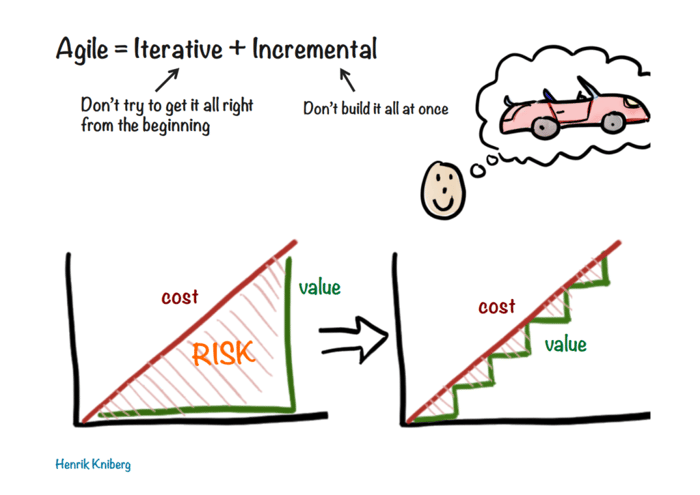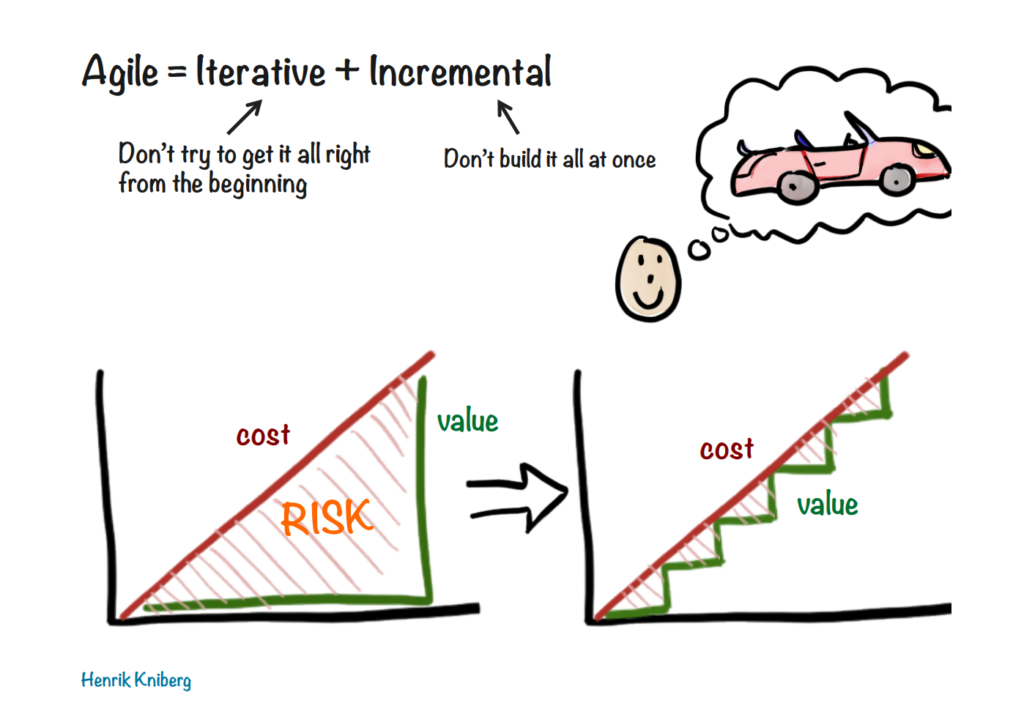The Agile methodology is a working method that is changing the project development of many companies, including giants like Google, Amazon, and Microsoft. Since the first decade of the 21st century, software developers in large companies have been using this methodology. Over the years, it has made its way into other areas such as marketing and human resources. But what can this methodology do for your company? Is it worth the effort to implement it?
99% of the time, the answer is yes, but keep reading to find out if your company falls into the remaining 1% that doesn't need this methodology.
First of all, what is Agile?
Agile is much more than a project development methodology; it is more of a philosophy that determines a different way of organizing and working.
It provides commercial value from the early stages of product development. It requires a deep focus on the minimum viable product (MVP), i.e., the product that provides basic functionalities and reduces other functionalities estimated to be more costly and provide less value to the user. It requires constant feedback—the more constant, the better.
For example, if your company's MVP is the homepage of your website, it might take two weeks to complete, and it could be the tool that marks the next success in your company, even if the rest of the page is not yet finished.
Despite all the mentioned benefits, there is still 1% of companies that are not compatible with this methodology. That's why we present the first reason why Agile may not be for your company.

1. Your company's business model is not compatible
The reality is that this methodology does not apply to all companies. Some products, companies, or strictly regulated teams, such as finance or healthcare, simply cannot operate effectively within an Agile framework. This often happens within existing business models because employees usually know exactly what features and functionalities the final product will have and the steps to achieve it.
If your organization is in one of these fields, there is no need to implement agile frameworks. If your company has a detailed and defined specification of what needs to be fulfilled, it is recommended to use the Waterfall approach, which takes the software development lifecycle in successive stages, so the next stage cannot begin until the previous one is completed.
2. You adopt practices instead of principles.
Agile is defined by 12 principles. Any process or practice established with your team will be considered "agile" as long as it adheres to those principles. For some companies, this means adopting Scrum, for others, it's Kanban or some other framework. Agile has no stable form. In fact, the only constant in Agile is change. And that applies to every part of the process. Use Agile principles to continually reassess your workflow and ensure it adapts to changes as well as your team.
3. Your team doesn't see value in applying the Agile methodology
If your team is not convinced that Agile has value, it will be reflected in the results. It is essential to have people whose values align with Agile values. To assemble a perfectly aligned team, we recommend scanning your professional network for people with an innovative and proactive culture.
If your staff is not that excited, try hiring an Agile coach. No one can explain the basic values and principles of this working approach better than someone who is professionally trained to do just that.
4. You are implementing the methodology incorrectly
Continuous cooperation between the management area and the development area is the very foundation of Agile. If your development team is Agile, but your management team is not ready to invest time and effort in daily communication and periodic feedback, this approach will be useless.
When management and development operate in isolation, the development team does not get enough information to work efficiently, and the management team does not get enough information to manage requirements and meet defined goals. This can lead to a vicious circle of misunderstandings, where organizational goals are not met. Therefore, before implementing Agile, make sure that both the development team and the management team understand the value and are ready to cooperate closely on a daily basis.
Conclusion
Keep in mind that "implementing Agile" is not the same as "being Agile." It is crucial to ensure you think about Agile transformation in terms of "being" rather than "doing" prescribed practices. This methodology that is changing the DNA of companies is not a set of rules. Instead, it is an umbrella that encompasses a certain way of thinking, values, and principles.
The incorporation of new frameworks as part of ongoing success is possible with a well-developed strategy that involves the entire organization and prioritizes communication, clarity, and continuous improvement. Contact us for a free consultation on digital transformation and find out how you can start.





